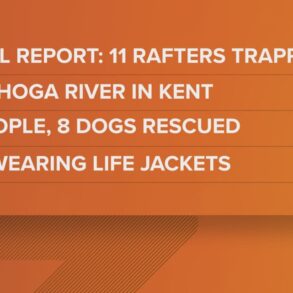




Turkey is once again drawing criticism from animal rights activists over a proposed bill targeting stray animals. The country’s Animal Rights Law was last amended in 2021. The changes introduced at the time, included mandatory pet microchipping, penalizing pet abandonment, and a provision on sterilizing strays. While lawmakers initially included a provision allowing for the euthanasia of unadopted strays, it was eventually cut because of public backlash. However, the latter is back on the agenda, in a controversial new proposal prepared by the ruling Justice and Development Party (AKP).
According to the proposal, strays will have their photographs taken and listed on a government website for up to 30 days. If no one claims or adopts them, they will be euthanized by injection.
The ruling party claims the current system of sterilization is insufficient to control the stray dog population and fails to address public safety concerns. It also cited countries like the UK, Portugal, and Italy as examples where such measures are in place. Animal rights activists and regular citizens disagree. They are holding the government to account accusing it of failing to address the issue in a peaceful way despite previous promises.
Existing measures
Turkey adopted its first animal protection bill in 2004. At the time, it legitimized the catch, neuter, vaccinate, return (CNVR) method. The bill banned the killing of free-range dogs except “in cases specified in Animal Health and Inspection Act 3285.” Euthanasia was forbidden unless dogs suffered from “incurable diseases and conditions such as terminal illness.”
Local municipalities were tasked with caring for street dogs, including neutering, vaccinating, and rehabilitating them at community-managed shelters. At the shelter, dogs were assigned identification numbers with tracking chips placed on their ears.
In 2012, the ruling AKP proposed legislation “to remove stray animals from the streets and place them in sanctuaries outside towns and cities.” The bill was tabled after mass protests.
In 2018, after securing a victory in the presidential election, President Recep Tayyip Erdoğan vowed to bolster animal protection laws. In 2021, the Turkish parliament approved a new bill on animal rights. The law banned the sale of all cats and dogs at pet shops, classifying them as “living beings” rather than commodities, and made animal abuse punishable by up to four years in prison. Under the new act, pit bulls, Tosas, and other stereotypically dangerous dog breeds were banned from being bred and sold. Those found guilty of violating the act were subject to fines. The act also required pet owners to register their pets with digital IDs. On December 7, 2021, the animal protection bill was amended, requiring owners of breeds classified as “dangerous” to sterilize and register them with authorities before January 2022.
In December 2021, Erdoğan called on all city municipalities across the country to round up stray dogs and send them to shelters. The president also demanded that pet owners whom he called “white Turks” — a term used to identify individuals who are secular, Western, and mostly leftist — mind their pets. At the time, the controversy was stirred when a four-year-old girl was attacked by two off-leash pit bulls in Turkey’s Gaziantep province, prompting calls for the owner of the two dogs to be harshly punished. After Erdoğan spoke in Ankara, many municipalities started collecting stray dogs from the streets often violently.
But the issue of stray dogs is once again back on the political agenda with a proposal expected for a discussion within the next two weeks before the parliament goes into summer recess.
Insufficient and inhumane measures
Critics of the new proposal say resorting to euthanasia as a solution is inhumane. They also remind the authorities that existing shelters are in a poor state, underfunded, and have limited availability. Moreover, there have been too many instances of inhumane treatment of strays at shelters. One of the most well-known examples was the video that sparked public criticism after going viral, of an animal shelter employee in Turkey’s Konya province killing a stray dog by beating its head with a shovel in November 2022.
According to Article 28/a of Law No. 5199, cruel treatment of animals and deliberate killing of animals is considered a crime. Two of the employees seen in the video from the shelter in Konya were arrested at the time, but it hardly resolved the issue as the crux of the problem remained — under-budgeted shelters and negligence from the authorities who have been in power for more than twenty years.
The existing Animal Rights Bill mandates every municipality run a shelter. And according to Dr. Gülay Ertürk, the President of the Veterinarians Association, municipalities have yet to fulfill these obligations. Only 294 of 1,394 municipalities have shelters, and those that do, still lack effective sterilization. As such, according to Haydar Özkan, the Vice President of the Confederation for the Life Rights of Animals (HAYKONFED), the new proposal, was nothing but a “massacre under the guise of euthanasia.”
“The only solution is a sustainable sterilization campaign with the participation of all municipalities. All municipalities should establish a sterilization centre, employ a sufficient number of veterinarians and assistant personnel, and initiate a simultaneous sustainable sterilization campaign in accordance with medical and ethical rules,” Özkan told Gazete Duvar.
According to the changes made to the Animal Rights bill in 2021, municipalities were mandated to allocate a certain amount of their finalized budgets depending on the size of the local population the municipalities were catering, for animal shelters and rehabilitation centers. For Dr. Gülay Ertürk, the President of the Veterinarians Association, it remains unclear whether these allocations were made across all municipalities since 2021, given the lack of transparency of municipal budgets and their spending. But even if there were enough shelters, that is not the solution according to Ertürk who told Duvar English in an interview that sterilizing, vaccinating, and releasing the animals back to where they were found is the way to move forward. Exceptions however should apply to dogs identified as dangerous by animal welfare volunteers. These dogs should be housed in neighborhood care centers rather than killed explained Ertürk.
Beyond municipalities, the Ministry of Agriculture and Forestry, too has failed to implement effective measures.
In an interview with Bir Gun newspaper, Alper Karmış, Local Animal Protection Officer of the Ministry of Agriculture and Forestry and Chairman of the Association for Keeping Street Animals Alive said, “The public does not often recognize what it means putting an animal to sleep. Only later do they realize that it means killing them. Authorities know that most of our people won’t adopt no-breed dogs. So they think they will kill them. We do not accept this [logic].”
Citing examples of countries like the UK, Italy, and Portugal is also shortsighted tweeted journalist Nevşin Mengü. Referring to a study by a Political philosophy master’s student at Pompeu Fabra University, Mengü wrote, that although similar measures may be in place in the UK, in countries like Portugal and Italy there is a completely different approach to strays. “In Portugal and Italy, healthy dogs are not killed (for the last 30 years). Especially in Italy, the process of auditing and making a final decision on euthanasia is not a simple procedure. It needs to be shown that no current treatment will be helpful for sick dogs. That’s why it is shown as one of the most successful examples, along with Germany and the Netherlands,” explained Mengü.
The recent proposal reminded animal rights activists of 1910 when 80,000 dogs in Istanbul were sent to the deserted Sivriada on the Marmara Sea, where they perished from hunger and thirst. This policy was implemented by then Sultan Mehmed V in an effort to “westernize” the city just before the fall of the Ottoman Empire.
Many animal rights activists and critics of the proposal say the ruling party’s proposal to put the strays to sleep en masse is not that different.
There are no recent statistics on the number of strays in Turkey. However according to a 2022 statement by the then-Minister of Agriculture and Forestry, at the time, the number was estimated to be around 10 million.
It’s quite common in Turkey to see people caring for street animals by feeding them and building them homes on the streets. Some of these street animals have their own statues, while others have turned into popular mascots for local municipalities. And there are at least two documentary films, “Kedi” and “Stray,” portraying the lives of street animals in the country. Following the devastating February 2023 earthquake, the story of a fireman adopting a rescued cat warmed hearts across the country.
—
Previously Published on globalvoices.org with Creative Commons License
***
You Might Also Like These From The Good Men Project
Join The Good Men Project as a Premium Member today.
All Premium Members get to view The Good Men Project with NO ADS. A $50 annual membership gives you an all access pass. You can be a part of every call, group, class and community. A $25 annual membership gives you access to one class, one Social Interest group and our online communities. A $12 annual membership gives you access to our Friday calls with the publisher, our online community.
Register New Account
Need more info? A complete list of benefits is here.
—
Photo credit: Jackson, a stray Istanbul dog adopted in 2020. Image courtesy of the author.
This post was originally published on this site be sure to check out more of their content.












































